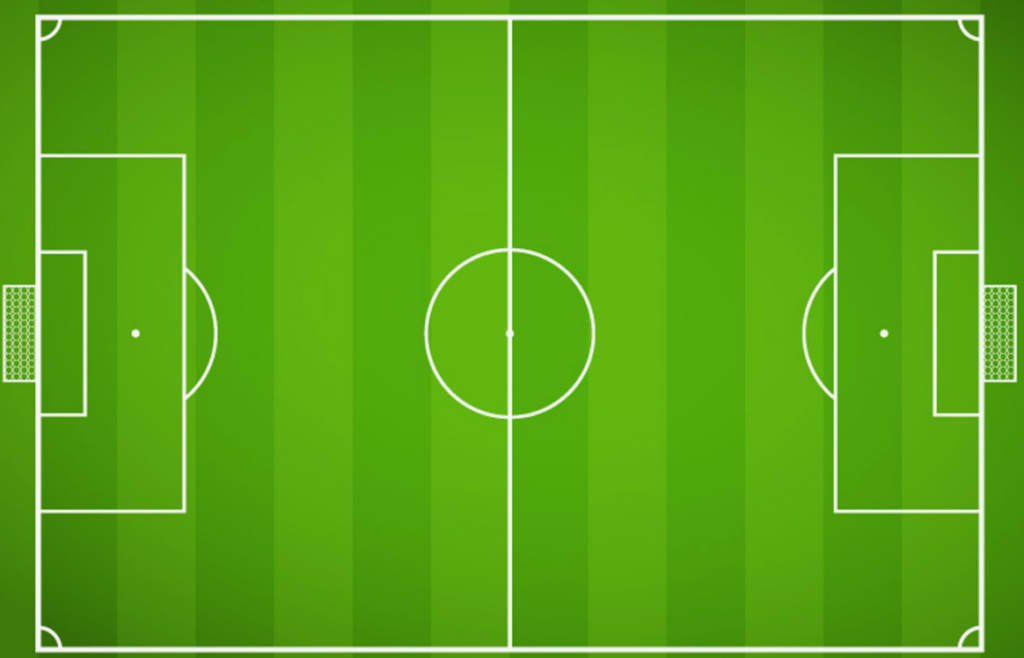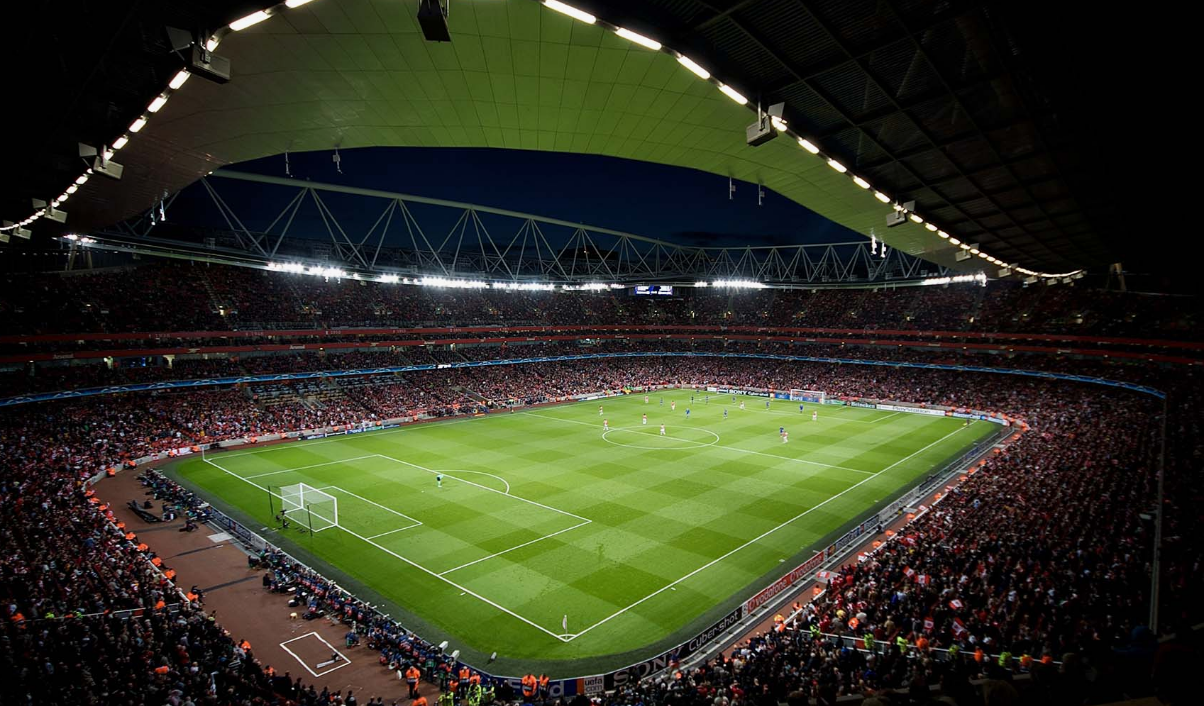A standard soccer field measures 100-130 yards in length and 50-100 yards in width. Soccer fields in yards offer a spacious playing area that allows for strategic gameplay and exciting matches. The dimensions of a soccer field in yards are crucial for players to understand the boundaries and size of the pitch accurately. This information is essential for teams to practice effectively and for referees to officiate games fairly. Knowing the exact dimensions in yards ensures that players can optimize their positioning and movements on the field.
Soccer field dimensions in yards play a significant role in the overall experience of the game, providing a suitable environment for players to showcase their skills and teamwork.
Soccer Field Dimensions in Yards

History of Soccer Field Dimensions
Soccer field dimensions in yards have evolved over the years. FIFA regulations dictate that the standard field size should be between 100 and 130 yards long and 50 to 100 yards wide. These dimensions ensure a consistent playing surface for professional and amateur soccer matches worldwide.
Evolution of Soccer Field Size- Soccer Field Dimensions in Yards
The history of soccer field dimensions dates back to the sport’s early origins. In the 19th century, when soccer was formalized in England, the field’s size varied widely, leading to inconsistencies in gameplay. As the sport gained popularity, there was a need for standardization, leading to the establishment of official field dimensions. Over time, the evolution of soccer field size has been influenced by various factors, including the standardization efforts of governing bodies such as FIFA.
Impact of Field Size on Game Strategy
The impact of soccer field dimensions on game strategy cannot be overstated. A larger field allows for more open play and encourages a possession-based style of play, while a smaller field promotes a tighter, more defensive game. The size of the field directly affects player positioning, movement, and tactical approaches. Understanding the impact of field size on game strategy is crucial for coaches and players in devising effective game plans and formations that capitalize on the dimensions of the field.
Standard Soccer Field Dimensions
Soccer, also known as football in many countries, is a widely popular sport played on a rectangular field. Understanding the standard dimensions of a soccer field is crucial for players, coaches, and fans alike. The size of the field can greatly impact the dynamics of the game and player strategies. Let’s delve into the standard dimensions of a soccer field, including the regulation field size, penalty box dimensions, and goal size.
Regulation Field Size
The standard soccer field dimensions in yards for a regulation field typically range between 100 and 130 yards in length and 50 and 100 yards in width. These dimensions can vary slightly depending on the level of play and the specific regulations of the governing soccer association.
Penalty Box Dimensions
Within the soccer field, the penalty box, also known as the 18-yard box, is a critical area. Its dimensions are approximately 44 yards in length and 18 yards in width. This area is where fouls committed by the defending team can result in penalty kicks for the attacking team.
Goal Size
The soccer goal, positioned at the center of each goal line, has standard dimensions of 8 feet in height and 8 yards in width. These goals are essential for scoring, and their size adds an exciting element to the game, requiring precision and skill from players aiming to score.
Variations In Soccer Field Dimensions
When it comes to soccer field dimensions, various variations cater to different forms of the game. From small-sided fields to futsal courts, each variation has its specific dimensions tailored to the style of play.
Small-sided Field Dimensions
In small-sided soccer, the field dimensions are smaller compared to regular soccer fields, typically ranging from 25-35 yards in width and 50-65 yards in length. These smaller dimensions allow for a more fast-paced and intense game, suitable for smaller teams and limited space.
Futsal Court Dimensions
Futsal, a variant of soccer played on a hard court surface, has its own specific dimensions. The futsal court is typically 25-42 meters in length and 16-25 meters in width, providing a smaller and more enclosed playing area compared to traditional soccer fields. This smaller size encourages quick and skillful play, making it popular among players looking to hone their close control and technical abilities.
Factors Influencing Field Size
Factors influencing soccer field size in yards include FIFA regulations, available space, and age groups using the field. Dimensions are crucial for game dynamics and player safety, ensuring a standardized playing surface for all levels of soccer.
Soccer is a sport that is loved and played by millions of people all over the world. To ensure a fair and competitive match, the size of the soccer field must adhere to certain regulations. Factors influencing field size can be divided into two categories: FIFA regulations and local regulations and constraints.

Fifa Regulations
FIFA, the governing body of soccer, has set regulations for the size of soccer fields. According to FIFA, the length of a soccer field must be between 100-130 yards, while the width must be between 50-100 yards. These regulations apply to all international matches, including the World Cup. Additionally, FIFA requires that the field be rectangular and that the lines marking the field be between 4-5 inches wide. These regulations ensure that all international matches are played on fields of equal size, creating a level playing field for all teams.
Local Regulations And Constraints
While FIFA regulations are followed worldwide, local regulations and constraints may dictate the size of a soccer field. For example, a local government may have zoning laws that limit the amount of space available for a soccer field. Additionally, the size of the field may be influenced by the location of the field. A soccer field located in a densely populated area may have to be smaller than a field located in a rural area. Other factors that may influence the size of a soccer field include the age of the players, the skill level of the players, and the type of league in which the players are competing.
Importance of Correct Field Dimensions
Correct field dimensions are crucial in soccer to ensure fair play and safety. Soccer field dimensions in yards dictate the game’s flow and player positioning, impacting strategy and performance. Precise measurements enhance the overall game experience and uphold the integrity of the sport.
Impact on Player Development
Correct field dimensions are essential for the development of young soccer players. A field that is too large or too small can negatively impact a player’s ability to develop the necessary skills for their age group. For example, a field that is too large for young players can result in excessive running and fatigue, which can hinder their ability to learn and perform skills such as dribbling and passing accurately. On the other hand, a field that is too small for older players can limit their ability to practice long-range passes and shots. Therefore, it is crucial to ensure that the field dimensions are appropriate for the age and skill level of the players.
Ensuring Fair Play
Proper field dimensions are also necessary to ensure fair play. A field that is not correctly marked can lead to confusion and disputes during the game, ultimately affecting the outcome. For example, if the penalty box is not marked correctly, it can lead to incorrect penalty calls and impact the game’s result. Additionally, the corner flags and goalposts must be placed correctly to ensure that the game is played fairly. Therefore, it is crucial to ensure that the field dimensions are accurately marked and adhere to the rules and regulations of the game. Overall, it is essential to recognize the importance of correct soccer field dimensions.
Challenges In Maintaining Field Dimensions
Ensuring the correct dimensions of a soccer field is crucial for the game’s integrity and fairness. Maintaining the FIFA soccer field dimensions in yards requires careful attention to various factors, and groundskeepers often face challenges in preserving the field’s measurements. From adverse weather conditions to the upkeep of field markings, the task of maintaining the proper dimensions demands dedication and expertise.
Weather Conditions
Weather can significantly impact the dimensions of a soccer field. Heavy rain or extreme heat can cause the field to expand or contract, affecting the overall measurements. Groundskeepers must constantly monitor and adjust the field to counteract the effects of weather, ensuring that the youth soccer field dimensions in yards remain accurate.
Field Markings And Maintenance
Accurate field markings are essential for maintaining the proper dimensions. Regular maintenance, including repainting lines and ensuring their precision, is crucial. Groundskeepers must diligently inspect and refresh the markings to adhere to the soccer field dimensions in yards in feet specified by official regulations.
Future Trends In Soccer Field Dimensions
As the game of soccer continues to evolve, so do the dimensions of the soccer field. The future trends in soccer field dimensions are shaping the way the game is played and experienced. From adaptations for different age groups to technology integration, the soccer field of the future is set to undergo significant changes.
Adaptations For Different Age Groups
Adapting soccer field dimensions for different age groups is crucial for the development and safety of young players. The standard soccer field dimensions in yards may not be suitable for youth players, leading to potential injury risks and an imbalance in the game. Therefore, future trends involve creating adaptable field dimensions that cater to specific age groups, ensuring a more inclusive and safe playing environment for all players.

Technology Integration
Technology integration is revolutionizing the way soccer fields are designed and maintained. With the use of advanced turf management systems and GPS tracking, the future soccer field dimensions in yards will be optimized for precision and performance. This integration allows for real-time analysis of player movements and field conditions, leading to more efficient field management and enhanced playing experiences.
Frequently Asked Questions
How many yards is a full soccer field?
A full soccer field is typically 100-130 yards long.
What is the size of a professional soccer field?
A professional soccer field is typically 100-130 yards in length and 50-100 yards in width.
What is the size of the FIFA football field?
The FIFA football field size is 100-130 yards in length and 50-100 yards in width.
What are the dimensions of a 5th-grade soccer field?
A 5th-grade soccer field typically measures 70-80 yards in length and 40-50 yards in width.
Conclusion
Exploring the dimensions of soccer fields in yards reveals the vast diversity in field sizes. Understanding these variations is crucial for players and fans alike. Whether it’s a school field or a professional stadium, each yard on the pitch holds its significance in the game of soccer.

